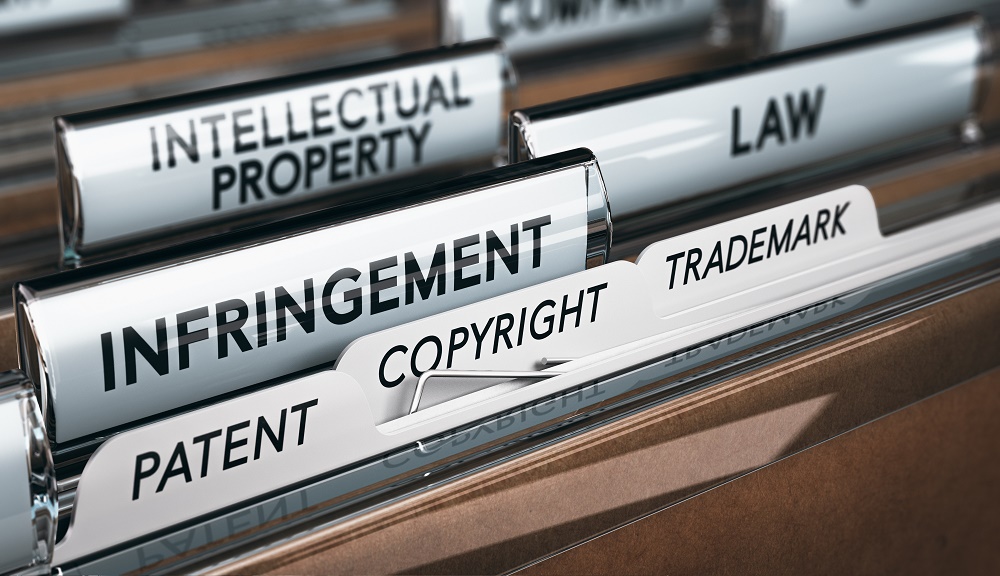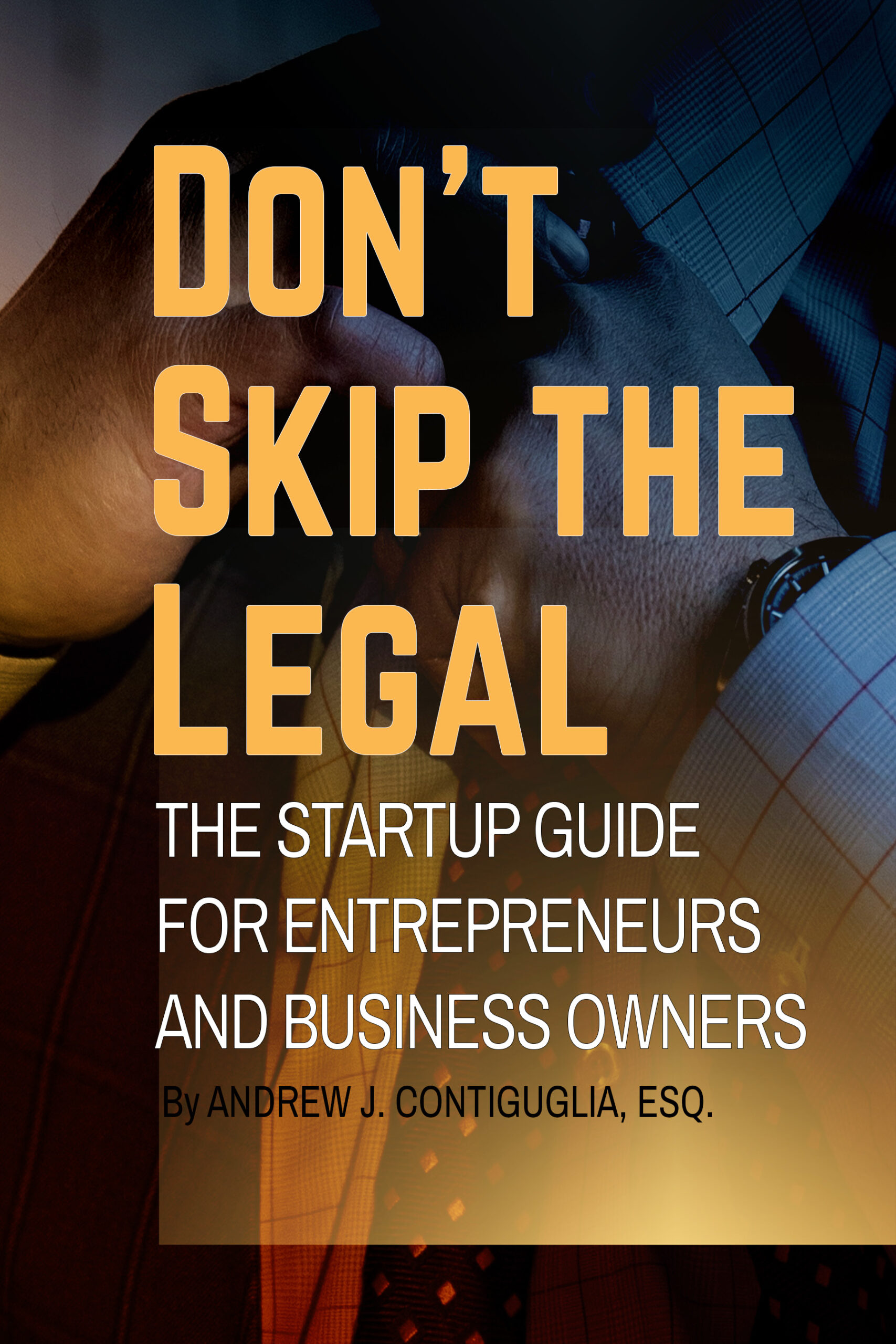Intellectual property rights are an asset of your business, no different than the cash you have in the bank or the equipment you use to run it. As such, business owners must safeguard their IP rights and understand IP law to stop anyone from stealing or copying their ideas and creations.
Utilizing copyrights, trademarks, and trade secrets as legal safeguards in your business can help maintain the prosperity of your company. They allow you to preserve your inventions and artistic creations while ensuring you get paid for your labor…but many business owners find themselves with questions about intellectual property rights and the right moves for their business.
Intellectual Property Rights 101
Let’s explore the basics of copyright, trademark, and non-disclosure agreements (NDAs) and provide tips on acquiring and protecting these critical rights in your business.
Copyright Basics
Original works of authorship, such as literary, musical, and artistic creations, are protected by copyright laws. This suggests that your original work, like your logo, has your sole copyright ownership. Further legal protection is provided by registering the work with the Copyright Office, securing your brand, and inhibiting others from copying it.
How to register a copyright
To register a copyright, you must complete an application, pay a filing fee, and send the application along with a copy and an in-depth description of your work to the copyright office. You must also include the work’s category (such as music, art, or literature), creation, publication dates, and genre.
You can fill out a copyright application and pay your filing fees online through the copyright office’s electronic copyright system, www.copyright.gov, or you can file a paper application by mail.
Protecting your logo
Once completed, you become the sole person or entity that can reproduce, make derivatives, distribute, and sell the copyrighted item. Out of all your creative elements, your logo is the one symbol that will represent your company and your brand. You must protect it as you would any other asset of your business.
This post dives deeper into different types of business assets.
Risks of not copyrighting your logo
If you don’t copyright your logo, you risk having to pay royalties to another business that beats you to it. You also run the risk of having to completely rebrand or spend your hard-earned money on litigating a trademark infringement case rather than growing your business.
However, by copyrighting your logo, you are defending and maintaining the commercial value of your brand equity. Anyone who violates or utilizes your copyright improperly could face legal repercussions. So, your work must have a perfected copyright to initiate a case in court to assert your legal interests.
Trademark Basics
Now, let’s move on to the other important aspect of intellectual property protection – trademarks.
A word, phrase, symbol, or design that identifies and distinguishes the source of products or services is known as a trademark. Trademarks safeguard company names, logos, and other distinguishing features about their products or services. Your company must use the trademark in commerce to identify the products or services you provide to customers to be granted trademark protection.
Registering trademarks
You can register trademarks through the United States Patent and Trademark Office (USPTO). To begin, you’ll need to complete a trademark application and pay a filing fee to file a trademark. Once completed and approved by an examining attorney, you will gain additional legal protection to make enforcing your rights in court easier.
You can access the form or apply online through the www.uspto.gov website. The website is a valuable resource with several articles and videos to help you with your filing needs. It also walks you through the filing process!
You’ll also need to include a thorough description of the mark you want to protect and the products or services you plan to use to identify in your petition. You will receive a certificate of trademark registration following the review and approval of your application. This document proves your ownership of the mark and permits you to use it in connection with your products or services.
Trademark protection
Trademark protection can be a crucial part of a company’s intellectual property portfolio due to its function in increasing brand awareness and its potential to be a substantial driver of customer attraction. Trademarks protect a company’s or product’s brand and goodwill by preventing third parties from using similar marks.
Your trademark helps safeguard your rights, and you might need to renew your registration occasionally. Remember, trademark rights require active enforcement; they are not automatically given. This suggests the only way to prevent others’ unlawful use of your mark is through legal action or cease-and-desist letters.
Apple is the perfect example of a company that has built an untouchable brand. Their company name doesn’t need to be present for consumers to know what they’re looking at when they see their logo. Would this have been possible without a trademark? The short answer is likely no.
Copyrighted vs. trademarked
Apple’s logo is an excellent example of what you can copyright vs. trademark. An image of an apple cannot be copyrighted since it’s a generic and simplistic concept. But the use of an apple as a symbol for a software company? This can be protected as a trademark.
What else can be trademarked?
Well, let’s see:
- Are you doing business under your personal name? You can register it as a trademark. Think, Michael Kors.
- Did you make up a creative name for your business? You can trademark it. Think Coca-Cola.
- Do you have a unique logo that symbolizes your organization? Depending on the design, it can be trademarked and copyrighted, allowing you to get the broader protections of both strategies.
Trademarks also apply to your company’s particular terms and slogans to distinguish its brand. Good examples are Nike’s “Just Do It” or Apple’s “Think Different.”
Legal advice for trademarks and protecting your intellectual property rights
By filing a trademark for your creative assets, you can be confident your company will remain distinctive, and your brand will retain its worth. To make sure you appropriately safeguard your intellectual property and adhere to the relevant laws, it’s always a good idea to get legal advice. Many people mistake the process as an easy one.
Filing for a trademark is a legal proceeding, unlike filing for copyright protection. Unfortunately, a trademark filing requires more sophistication than most business owners are accustomed to.
NDA Basics
When you partner with third-party vendors, they get a lens into your operations. Depending on the scope of work, they may have access to the ideas and innovations that would hurt your business if they were to be discussed with competitors or shared with the public. This brings us to NDAs.
What is an NDA?
Non-disclosure agreements (NDAs) are necessary for businesses to protect their proprietary information. NDAs are binding contracts prohibiting one party from disclosing confidential information to a third party. Confidential information is any valuable information to the disclosing party but not commonly known to the public.
Examples of confidential information
Things like the schematics of new products, financial information, new business ideas, and details around a merger and acquisition all hold sensitive information that needs to be protected. Even something as seemingly simple as your marketing plan can be used against you as you build your competitive advantage in the marketplace.
This category includes:
- Formulas
- Recipes
- Manufacturing processes that provide a corporation with a competitive edge
People like suppliers and employees who come into contact with confidential or proprietary information about your business should be required to sign a non-disclosure agreement. If individuals disclose the subject information, they would be responsible for any damages, and a court could subject them to an order prohibiting the use or dissemination of any protected information.
An NDA is like any other contract among the parties, except the terms are exclusive to the sole requirement of protecting confidential information.
What do NDAs include?
Most NDAs include some or all the following provisions:
The information to be kept confidential
A thorough description of the information that is confidential. This should be accurate and comprehensive enough to protect the information you want to keep private. This description will be the definition of the material you are seeking to protect. Any limitation on this information will expose you to allowing some information to trickle through.
So, it’s crucial to be as comprehensive as possible to avoid this. After all, it’s better to be over-inclusive than under-inclusive. You can always scale it back later.
A list of potential applications for private information
This should include the purposes for the data, such as internal business or demands for research and development. This provision allows individuals to utilize the information for specific purposes, assuming you allow them to do so. It outlines the process and procedure for minimal use of your proprietary information.
The duration of the NDA
In this, how long the NDA will last should be made clear. There is no required timeline. Still, it’s generally best to dictate that an NDA will be in effect for at least five years. However, this could change depending on the kind of information it protects and how quickly it becomes irrelevant or changes. In the tech world, this could happen suddenly as new methods and techniques pop up each day.
Consequences for breaching an NDA
A clause outlining the consequences for breach of the NDA. This should specify the action to be taken upon violating the NDA. Typically, a violation of an NDA can lead to a business owner seeking damages (money) for the breach. More commonly, however, the owner seeks injunctive relief against the violator and receives a court order prohibiting any present or future distribution of the information.
Read about four types of breach of contract next.
Successors and assigns
A clause specifying that the NDA is binding on all successors and assigns. This ensures the terms of the NDA will continue to apply even if the recipient of the confidential information changes hands. This way, the people down the line who receive protected information will continue to defend it.
Key Differences
Significant differences exist between a confidentiality agreement, an NDA, and a trade secret agreement.
First, the term “confidentiality agreement” generally refers to any arrangement involving the transmission of confidential information.
1. Type
An NDA is a confidentiality agreement to protect sensitive corporate data, such as trade secrets. A trade secret agreement is a unique NDA created to protect information regarded as a trade secret, such as a recipe or formula.
2. Scope
Another critical difference between these types of agreements is the scope of the protection they provide.
A confidentiality agreement may cover confidential information, while an NDA is typically limited to trade secrets and other business-related information. A trade secret agreement is even more specific–it only protects data considered a trade secret.
3. Duration
The duration of protection is also a critical difference between these agreements. A confidentiality agreement may last for a specific period, while an NDA and trade secret agreement can provide protection indefinitely as long as the information remains confidential.
Conclusion: Contact Intellectual Property Rights Lawyers
Now that you understand confidentiality agreements, NDAs, and trade secret agreements better, it’s time to seek the advice of experienced intellectual property rights lawyers for your next steps.
Our team at Contiguglia Law in Denver specializes in copyright and trademark protection and can assist with creating effective licensing agreements or enforcing your rights during mergers and acquisitions. Don’t leave your valuable intellectual property unprotected – contact us today for personalized legal guidance.
And remember: My book “Don’t Skip the Legal: The Start-up Guide for Entrepreneurs and Business Owners” covers intellectual property rights and other legal topics for business owners in much more depth. It’s available on Amazon—buy your copy today!
Did you learn a lot about intellectual property rights in this post?
Here are three more to read next:



